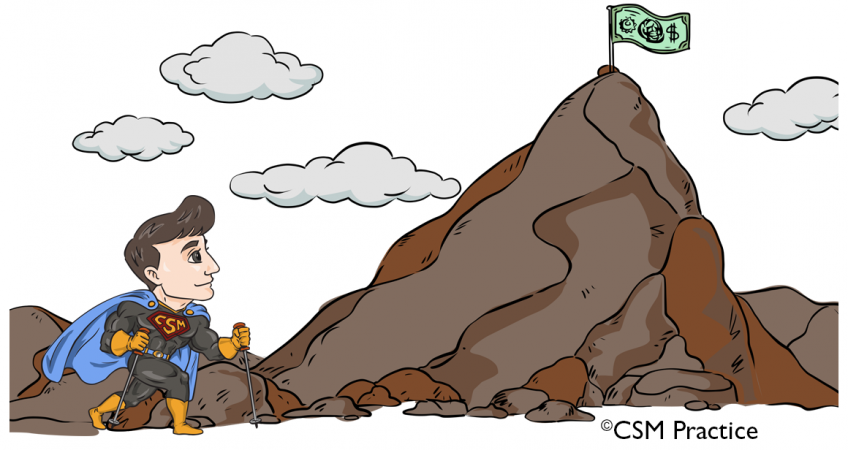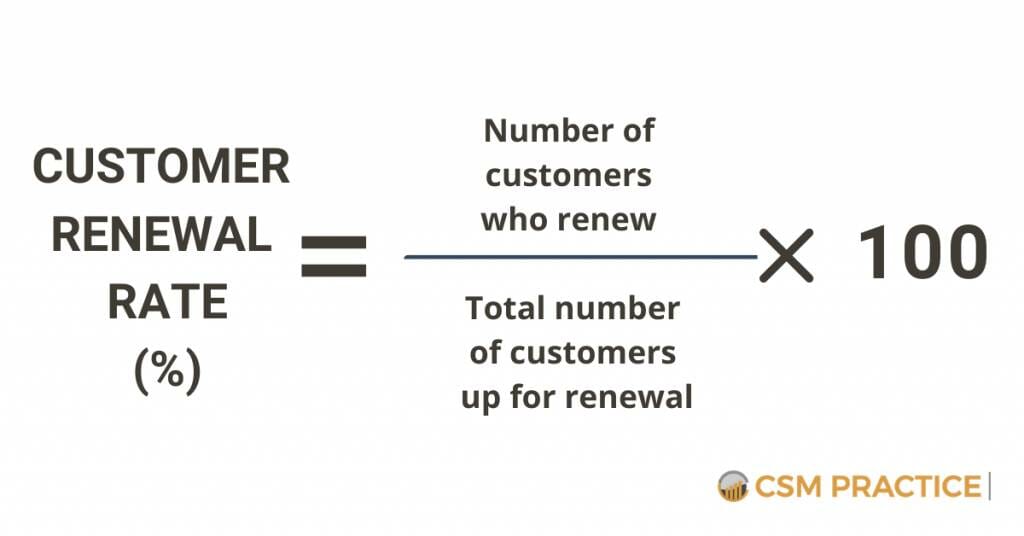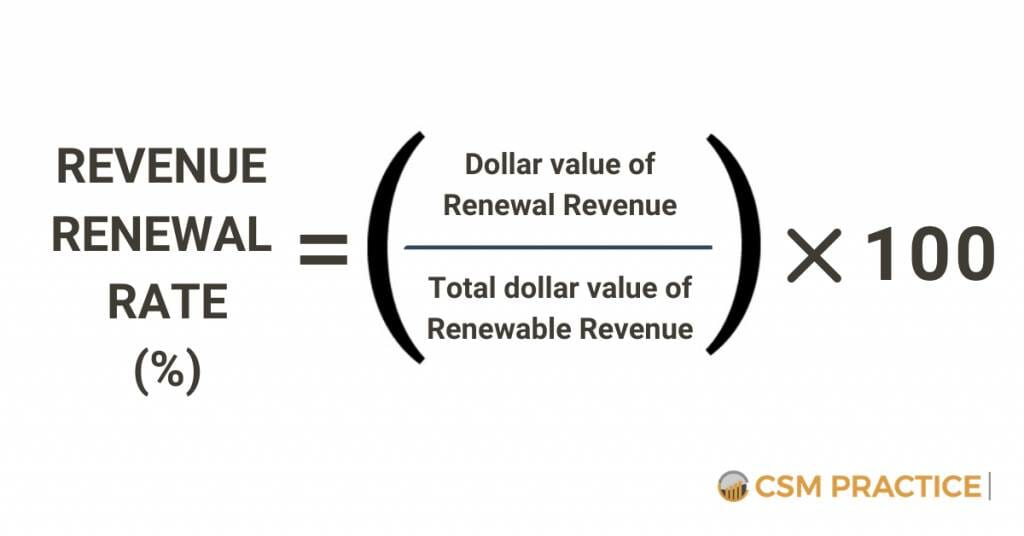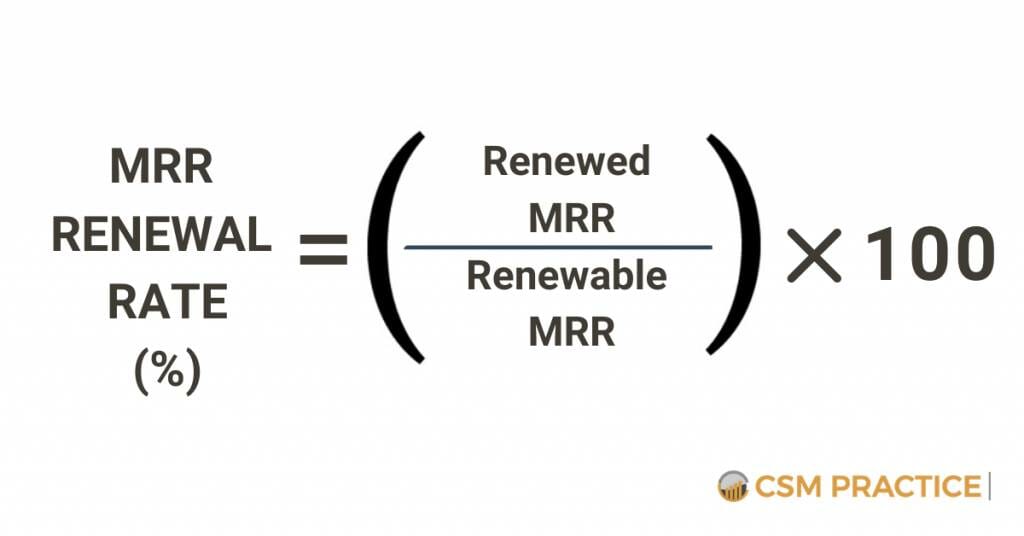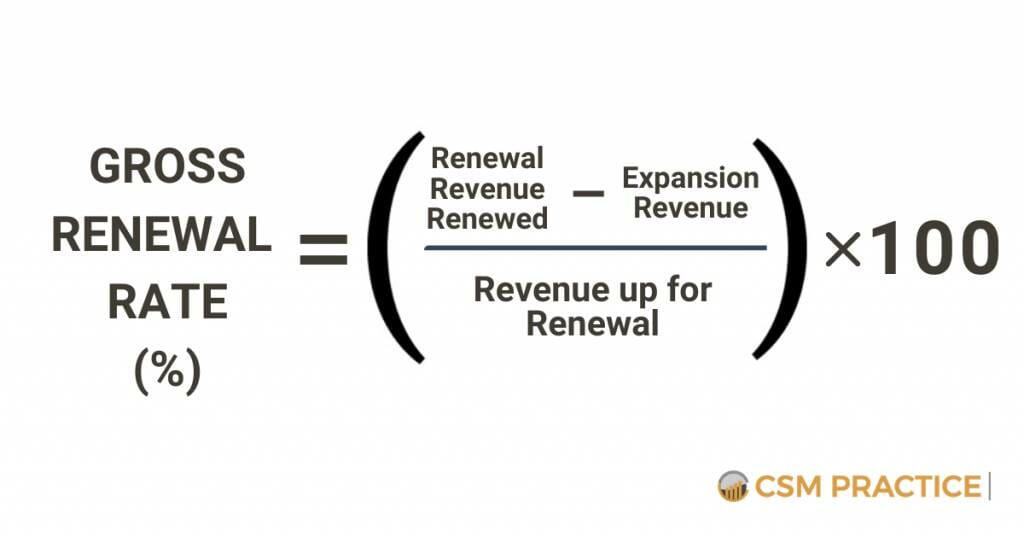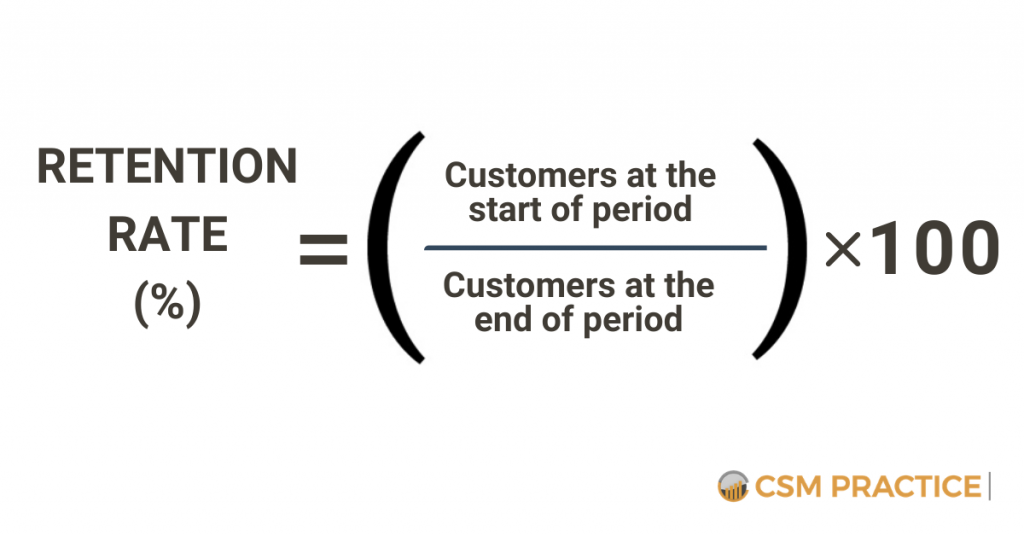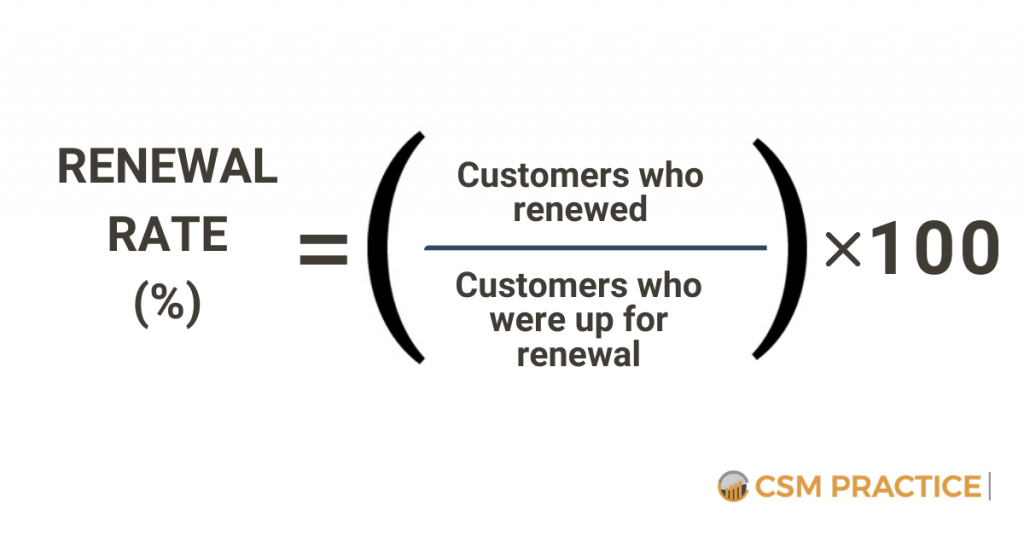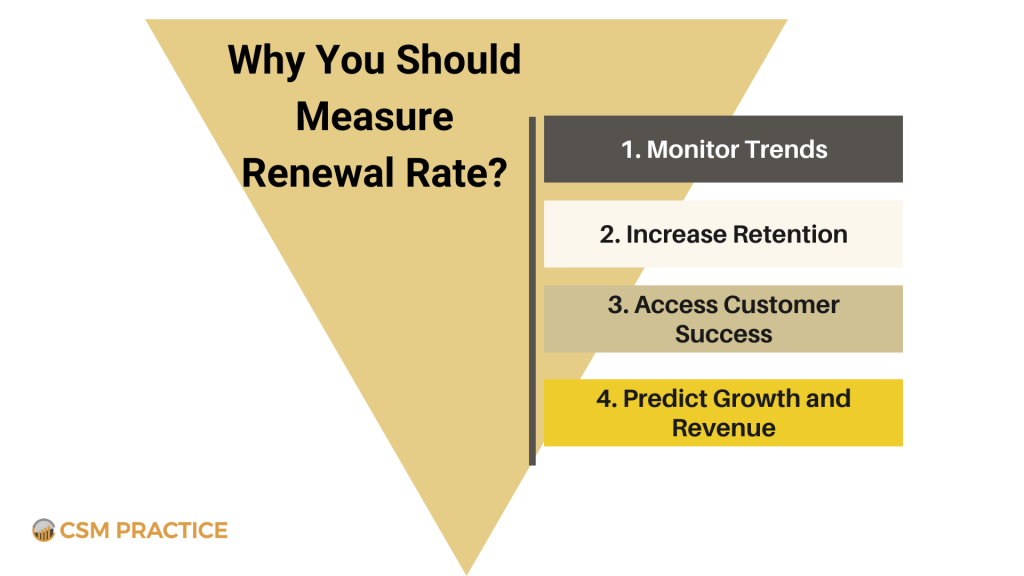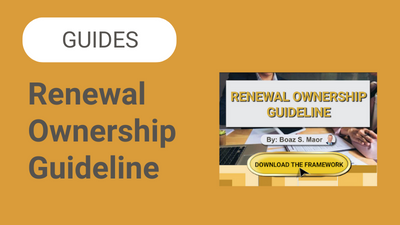Renewal Rate, what does that exactly mean?
The valuation of a SaaS company is based on its recurring revenue stream. However, the health of the recurring revenue is not dependent on new customers only, but also on the renewal rate of existing customers. SaaS Companies with high renewal rates can generate a regular, predictable recurring revenue stream more efficiently. It also allows them to focus on other income-generating processes like expansion or acquiring new customers.
Despite the benefits of a higher renewal rate, many SaaS companies focus on generating revenue from new customers even while they lose revenue to customer churn. After buying in, customers may churn due to poor onboarding, no ongoing customer success, bad support, wrong product fit, or product-related problems that lead to low adoption. A low renewal rate creates a leaky revenue bucket that prevents significant revenue growth.
Contrarily, SaaS companies who understand the importance of high renewals can grow stable revenue while delivering optimum value to their customers. The renewal rate metric also provides a quick overview of customer success team performance before in-depth analysis.
What is Renewal Rate?
Renewal rate is the percentage at which customers renew their subscriptions and extend their relationship with the company. It is measured at the end of the subscription period when customers are up for renewal. Renewal rate indicates a company’s ability to deliver long-term value to its customers and generate revenue.
Due to low switching costs, customers can churn for different reasons. Customer expectations are also higher than ever; hence, a high renewal rate means that customer needs are being met consistently. A low renewal rate indicates an inability to meet customer needs or deliver value to those that churned.
How to Calculate Renewal Rate?
The renewal rate is a measure of retention over a specific period. It can be measured weekly, monthly, or over the years. Measuring retention over different periods can reveal valuable information about when customers churn and why. For instance, measuring renewal rates over the early weeks after customers subscribe can be used to identify problems with onboarding.
Renewal rate can also be calculated in different contexts and for different variables, such as the number of customers, amount of revenue, no of seats or licenses, etc.
Each metric compares the amount of the variable that was renewed against the maximum amount that could have been renewed. The variable or type of renewal rate to be measured depends on the maturity, operations, and goals of a SaaS business. Renewal rate is usually expressed as a percentage.
-
Customer Renewal Rate
The customer renewal rate measures the rate of renewal of customers by dividing the number of customers that renewed at the end of their subscription period against the number of customers that could potentially have renewed. The ratio is then expressed as a percentage. 100% customer renewal rate means all customers who could renew at that time did so successfully. The customer renewal rate cannot be higher than 100%.
Customer Renewal Rate (%) = (Number of customers who renew ÷ Total number of customers up for renewal) * 100
This method of calculating renewals is suitable for startup SaaS companies with a homogenous customer base. A homogenous customer base has customers with similar needs, markets, contract value, and contract terms. As the customer base becomes varied, customer renewal rate calculations can be misleading.
-
Revenue Renewal Rate
All customers are valuable, but not all customers are worth the same. Revenue renewal rate or dollar renewal rate is the ratio of revenue renewed measured against the total amount of renewable revenue during a given period. Like other renewal rate types, it is expressed as a percentage. A 100% revenue renewal rate means that all renewable revenue was successfully renewed.
Revenue Renewal Rate (%) = (Dollar value of renewal revenue / Total dollar value of renewable revenue) * 100
The revenue renewal rate can be higher than 100% if some customers choose to expand their accounts during renewal. The revenue renewal rate indicates the financial health of the company and its ability to generate and grow revenue in the future.
The revenue renewal rate is best suited for SaaS businesses that deliver multiple solutions for diverse customers with different contract values. A company can have a high customer renewal rate with a low revenue renewal rate or otherwise. This is because some customers may have huge contracts compared to others, which makes their renewal more important to the company’s financial health.
-
MRR Renewal Rate
MRR renewal rate is a revenue renewal rate that has been normalized to a period of one month. It focuses on renewals due in one month to allow for consistent tracking and trend monitoring.
MRR Renewal Rate (%) = (Renewed MRR / Renewable MRR) * 100
-
Net Renewal Rate (NRR)
The net renewal rate is the percentage of renewable revenue that has been renewed while taking expansion revenue into account. It is the ratio of the total renewed revenue (including upsell, cross-sell, upgrades) against total revenue that was due to be renewed. The most successful SaaS businesses have renewal rates that are greater than 100%. This means more revenue is gained from renewals and expansion than is lost to churn.
Net Renewal Rate (%) = ((Revenue renewed + Expansion revenue) / Revenue up for renewal) * 100
-
Gross Renewal Rate (GRR)
Gross renewal rate measures the amount of renewable revenue that has been renewed during a given period without including benefits from expansion revenue or price increases. GRR is the ratio of renewed revenue against total revenue that was up for renewal. Unlike the net renewal rate, the gross renewal rate cannot exceed 100%, but the higher the better. Since expansion revenue is not included in its calculation, GRR reveals the impact of churn on a business’ ability to grow.
Gross Renewal Rate (%) =
((Renewal revenue renewed – Expansion Revenue) / Revenue up for renewal) * 100
Renewal Rate in Salesforce
To calculate the revenue renewal rate in Salesforce, start by summing up the dollar amount of closed-won opportunities in any period of your choosing. Next, sum the dollar amount of opportunities that were due during that period. Lastly, divide the closed won opportunities by the total opportunities in that period.
Forecasting Renewals
To forecast renewals, you need an updated view of your business and customer base. Combined with data from CRMs, CSMs can judge customer health more accurately and predict the probability of renewal for each customer. Some CRMs have a default forecast (say 70%) for all customers, while others adjust the forecast based on the customer’s health score. Either way, the customer success manager’s sentiment adds more authenticity to the forecast. They can also add more information about expansion opportunities.
Renewal Rate vs Retention Rate
Renewal rate and retention rate are widely used interchangeably when accessing how effective businesses are at keeping their customers, but they are not the same. Retention rate measures the number of customers at the beginning of a period against the number of customers at the end of that period. It is used to determine how many customers were retained regardless of whether the customers were up for renewal, renewed automatically, or chose to actively renew their subscriptions.
Retention Rate (%) = (Customers at the start of period / Customers at the end of period) * 100
If the renewal rate is calculated monthly, then we can assume that not all customers will be eligible to renew every month. Renewal rate only measures the rate at which customers who were up for renewal actively decided to renew their subscriptions. Customers with ongoing subscriptions but aren’t due to renew are not included. Renewal, in itself, entails the specific processes of contacting customers who were due to renew and processing their renewals.
Renewal Rate (%) = (Customers who renewed / Customers who were up for renewal) * 100
Why You Should Measure Renewal Rate
As long as SaaS business models are based on subscription plans, renewal rate measurements will offer valuable insights into the health of the business. Since it costs five times as much to acquire new ones than to retain existing customers, revenue growth or decline is largely dependent on a company’s renewal rate.
As long as SaaS business models are based on subscription plans, renewal rate measurements will offer valuable insights into the health of the business.
1. Monitor Trends
One of the foremost benefits of tracking the renewal rate is leveraging trends that have a great impact on customers and revenue. Downward trends are easier to spot on month-to-month renewal rate measurements than with other metrics, such as retention rate or aggregate churn. Depending on your business, there may be more actionable insights to be gleaned from tracking renewal rates for different customer segments or cohorts as well. Recognizing these patterns early is key to taking proactive and strategic action for customer success managers.
2. Increase Retention
As mentioned earlier, a high renewal rate means customers continually derive some value from your solution and are, to some extent, successful with it. Hence, the renewal rate is a measure of customer satisfaction across the board. Therefore, companies that pay attention to renewal rates can understand the level of customer satisfaction, address pain points, and improve on customer favorites. Thereby, creating a successful environment where customers are happy to stay.
3. Access Customer Success
The value of customer success lies in maximizing monetary and non-monetary value for businesses and their customers. For this reason, customer success teams should own renewals. Renewal rate measurements and trends then provide a holistic view of the effectiveness of customer success teams and prove their ROI.
4. Predict Growth and Revenue
Customer and revenue renewal rates can be used to forecast future growth. Not only can SaaS businesses access their current customer success engagement, but they can also make more informed predictions as more customers and revenue are retained. Accurate forecasts help with guiding marketing, budgeting, goal-setting, and uniting all departments toward meeting set goals.
What Is Considered A Good Renewal Rate?
Although the customer renewal rate of at least 80% is reasonable, there really is no magic number due to different SaaS business models. Other factors, such as customer growth rate, customer lifetime value, customer acquisition costs, and expected customer lifetime should be considered when determining a good renewal rate for a business. Customer success teams must adjust their retention strategies and work towards 100% customer and revenue retention.
How To Increase Your Renewal Rate
Although the renewal rate is tied to revenue, increasing it requires a customer-centric approach. Successful customers have lesser motivation to churn and are more likely to expand their accounts. Therefore, the recipe for more renewals is customer success.
1. Understand Customer Needs
All customers are not the same. They may buy the same product, but they have different expected business outcomes. Working towards assumed customer needs or selling features they don’t need is a recipe for churn and down-sell. Understanding individual customer needs and value drivers are key to meeting them, therefore increasing their chance of renewing their subscription.
2. Invest in Customer Success
Unlike most other departments, customer success teams are focused solely on driving value and making customers feel valued. Effective customer success teams nurture customer relationships throughout their journey and align vendor and customer goals for mutually beneficial outcomes.
3. Increase in Adoption
Customers that don’t use the product are at a higher risk of churn since they derive no value from it. On the other hand, customers with a high level of adoption are more likely to renew. Customer success can drive the usage of sticky features that are integrated into their workflow so they use the solution regularly. It is a win-win as long as customers derive value.
4. Target At-risk Customers
Monitor customer health closely through a health score to proactively assess risk and take action. Start monitoring customer health early to give ample time for customer success managers to save at-risk accounts. Endeavor to personalize the renewal conversation as much as possible for those accounts.
5. Create a Customer Renewal Playbook
Renewal playbooks provide instructions for specific renewal events, ranging from action needed months before the due date to guidelines for handling late renewals. It ensures that as the customer success team grows, all team members act as one according to standardized processes and best practices. Customer success managers become more productive and all customers experience the same optimized customer experience.
 Summary
Summary
Renewal rate is the percentage of customers or revenue that renewed when they were due to be renewed. The renewal rate reflects the effectiveness of the customer success team and the amount of value that customers derive from the solution. It also indicates the financial health and future growth prospect for SaaS companies.
If you need help with measuring your renewals accurately or increasing your renewal rate to generate more revenue, feel free to contact us at CSM Practice for a consultation.

